Enhanced TDS
Identification & Functionality
- Chemical Family
- Function
- Structural Adhesive
- RTU Product Type
- Technologies
- Product Families
Features & Benefits
- Ready-to-Use Product Features
- Features and Benefits
- 15-minute open time
- 60% elongation at break
- Resistant to temperatures up to 212°F (100°C)
- Withstands E-coat processes up to 392°F (200°C)
- Excellent ageing and weathering resistance
- Minimal substrate pre-treatment needed
- Product Features
- Excellent ageing and weathering resistance
- 15 minutes open time
- 60% Elongation at break
- Resistant to temperatures up to 100°C
- Resistant to e-coat post-cure up to 200°C
- Minimum pre-treatment needed
Applications & Uses
- Compatible Substrates & Surfaces
- Markets
- Applications
Properties
Regulatory & Compliance
- Chemical Inventories
Technical Details & Test Data
- Processing Condition
- Pretreatment: The strength and durability of a bonded joint are dependent on proper pretreatment of the surfaces to be bonded, however the methacrylate adhesives can be used effectively with little surface preparation. Ideally joint surfaces should be cleaned with a good degreasing agent such as acetone, iso-propanol (for plastics) or other proprietary degreasing agents in order to remove all traces of oil, grease and dirt. Low grade alcohol, gasoline (petrol) or paint thinners should never be used. The strongest and most durable joints are obtained by either mechanically abrading or chemically etching (“pickling”) the degreased surfaces.
- Application of adhesive: This system is available in cartridges incorporating mixers and can be applied as ready to use adhesive with the aid of the tool recommended by Huntsman Advanced Materials. The resin/hardener mix may be applied manually or robotically to the pretreated and dry joint surfaces. Huntsman's technical support group can assist the user in the selection of a suitable application method as well as suggest a variety of reputable companies that manufacture and service adhesive dispensing equipment. A layer of adhesive 0.25 mm thick will normally impart the greatest lap shear strength to the joint. The joint components should be assembled and secured in a fixed position as soon as the adhesive has been applied.
- Temperature of application: the recommended temperature application range is 10°C to 40°C. Warning: the cure reaction can generate a high amount of heat, it is not recommended to mix large amounts of material at room temperature.
- Equipment maintenance: All tools should be cleaned with hot water and soap before adhesives residues have had time to cure. The removal of cured residues is a difficult and time-consuming operation. If solvents such as MEK are used for cleaning, operatives should take the appropriate precautions and, in addition, avoid skin and eye contact.
Temperature °C 10°C 23°C 30°C 40°C Cure time to reach
LSS > 1MPahours mintues 90 40 50 8 Cure time to reach
LSS > 10MPahours mintues 120 50 20 10 - Cured Properties
Unless otherwise stated, the figures given below were all determined by testing standard specimens made by lap-jointing 114 x 25 x 1.6 mm strips of aluminum alloy. The joint area was 12.5 x 25 mm in each case. The figures were determined with typical production batches using standard testing methods. They are provided solely as technical information and do not constitute a product specification.
Average lap shear strengths of typical metal-to-metal joints (ISO 4587) (typical average values)
Cured for 7 days at RT and tested at 73oF. Substrates sandblasted and degreased with acetone. They are typical values only, and do not constitute a product specification.
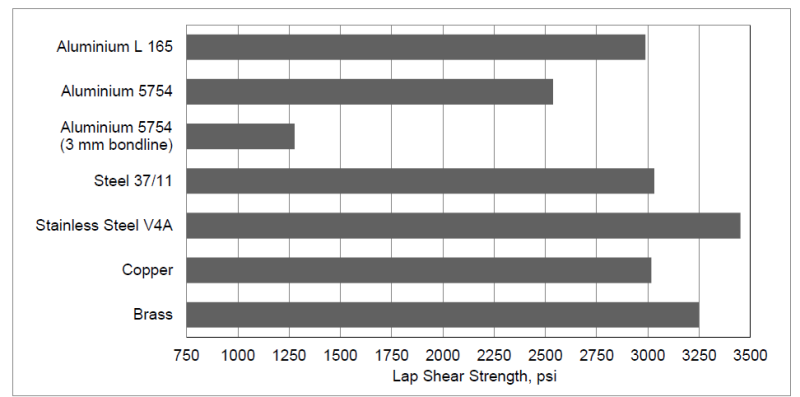
Note: ARALDITE® 2053-15 is not suitable for galvanized steel, for this type of substrate the ARALDITE® 2047-1 or ARALDITE® 2051 can be used.
Average lap shear strength with minimal surface preparation. Tested at 77°F (25°C).
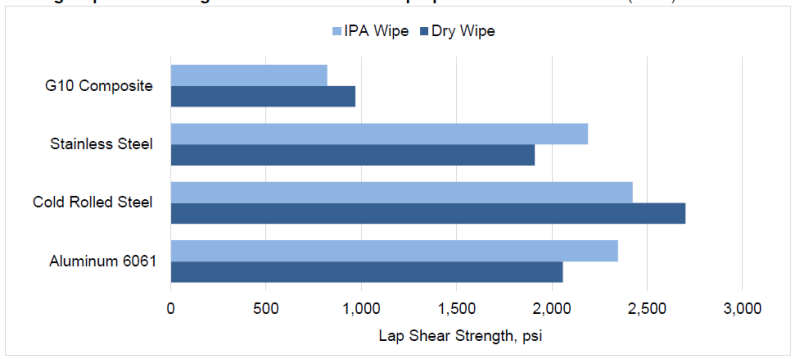
Average lap shear strength versus temperature with minimal surface preparation. Aluminum 6061 substrate.
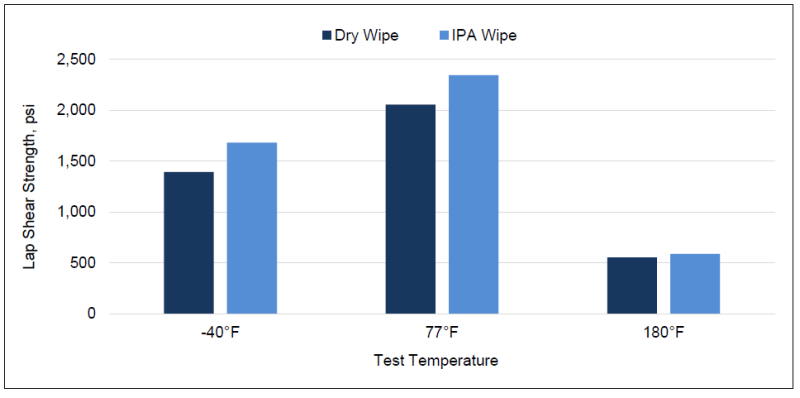
Average lap shear strengths of typical plastic-to-plastic joints (ISO 4587) (typical average values)
Cured for 7 days at RT and tested at 73oF. Substrates abraded and degreased with isopropanol.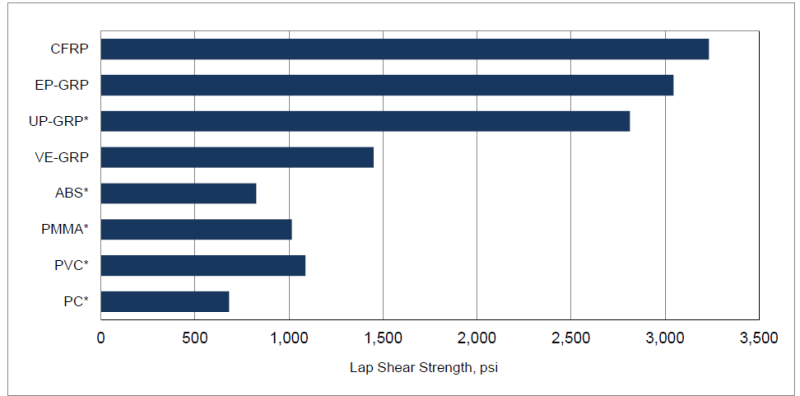
* UP-GRP, SMC, ABS, substrate failure or substrate’s delamination failure observed.
Lap shear strength versus temperature (ISO 4587) (typical average values)
Substrates sandblasted and degreased with acetone. Cured 7 days at RT.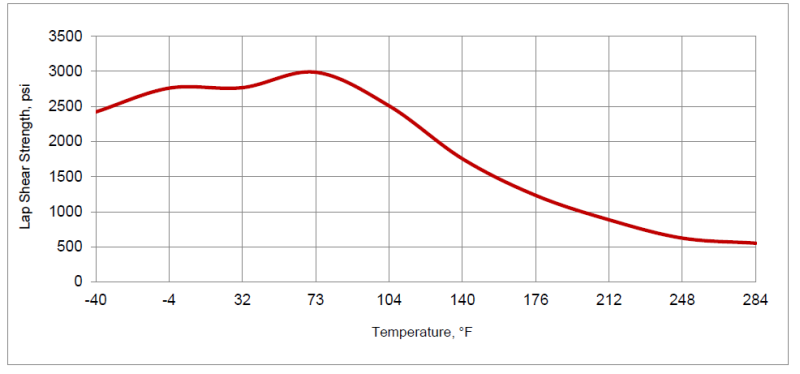
Lap shear after cycling ageing (typical average values) per ISO 9142/D4
Cured 7 days at RT. Tested at 73°F.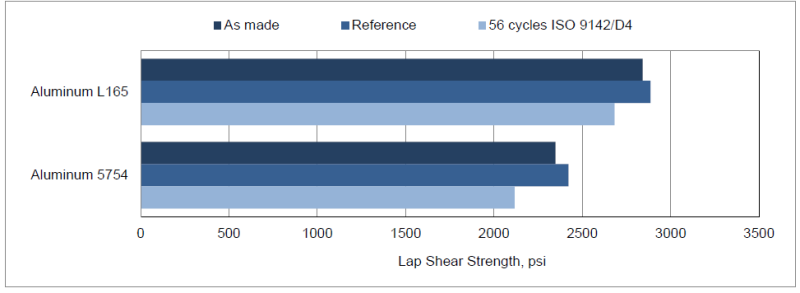
Lap shear strength after Cataplasma ageing (typical average values)
Cured 7 days at RT. Cataplasma aged per ISO 9142/E2. Tested at 73°F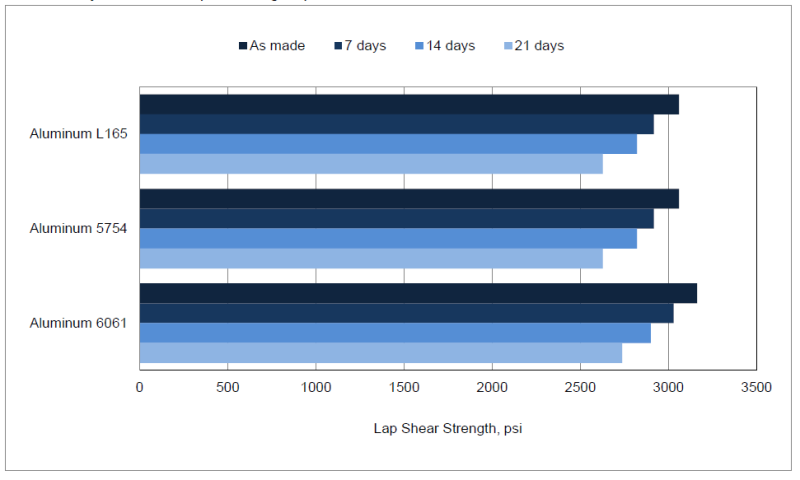
Lap shear strength after coating post-cure cycle at 200°C (typical average values)
Cure: 7 days at RT. Test at 23°C. Substrates sandblasted and degreased with acetone
Ageing with a simulated coating post-cure cycle of 20 minutes at 200°C in an oven. Test performed at 23°C.
Lap shear strength versus immersion in various media (ISO4587) (typical average values)
On aluminum, pretreatment: sandblasting. Cure: 7 days at RT. Tested at 23°C.
LSS was determined after immersion for 30, 60 days at 90 days at 23°C.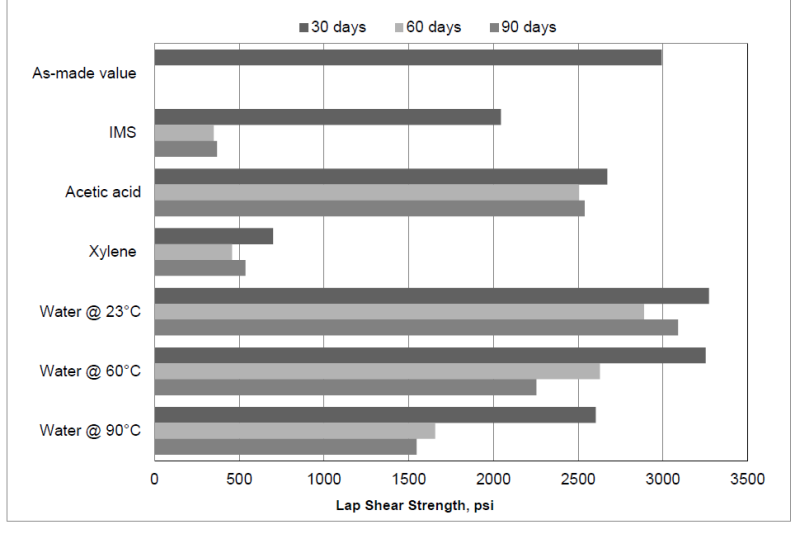
Key Value Unit Test Method Test Condition Glass Transition Temperature (midpoint) 235°F (113°C) °F (°C) DMA Cured 7 days at RT
Roller peel strength 37 (6.5) N/mm ASTM D3167 Cured 7 days at RT
T-Peel strength 55 (9.6) N/mm ASTM D1876 Cured 7 days at RT
Tensile Strength 2,750 (19) psi (MPa) ISO 527 Cured 7 days at RT
Tensile Modulus 145,000 (1000) psi (MPa) ISO 527 Cured 7 days at RT
Elongation at break 60 % ISO 527 Cured 7 days at RT
- Cure Cycle
Typical times to minimum shear strength on sandblasted aluminum / contact pressure
Temperature 10°C (50°F) 23°C (73°F) 30°C (86°F) 40°C (104°F) Cure time (min) to reach LSS > 145 psi (1MPa) 90 40 15 8 Cure time (min) to reach LSS > 1450 psi (10MPa) 120 50 20 10 - Processing
Pretreatment
The strength and durability of a bonded joint are dependent on proper pretreatment of the surfaces to be bonded, however the methacrylate adhesives can be used effectively with little surface preparation. Ideally joint surfaces should be cleaned with a good degreasing agent such as acetone, iso-propanol (for plastics) or other proprietary degreasing agents in order to remove all traces of oil, grease and dirt. Low grade alcohol, gasoline (petrol) or paint thinners should never be used. The strongest and most durable joints are obtained by either mechanically abrading or chemically etching (“pickling”) the degreased surfaces.
Application of adhesive
This system is available in cartridges incorporating mixers and can be applied as ready to use adhesive with the aid of the tool recommended by Huntsman Advanced Materials. The resin/hardener mix may be applied manually or robotically to the pretreated and dry joint surfaces. Huntsman's technical support group can assist the user in the selection of a suitable application method as well as suggest a variety of reputable companies that manufacture and service adhesive dispensing equipment. A layer of adhesive 0.25 mm thick will normally impart the greatest lap shear strength to the joint. The joint components should be assembled and secured in a fixed position as soon as the adhesive has been applied. For more detailed explanations regarding surface preparation and pretreatment, adhesive joint design, and the dual cartridge dispensing system, visit www.aralditeadhesives.com.
Temperature of application: The recommended temperature application range is 50°F to 104°F.
Warning: The cure reaction can generate a high amount of heat, it is not recommended to mix large amounts of material at room temperature.
Equipment maintenance
All tools should be cleaned with hot water and soap before adhesives residues have had time to cure. The removal of cured residues is a difficult and time-consuming operation. If solvents such as MEK are used for cleaning, operatives should take the appropriate precautions and, in addition, avoid skin and eye contact.
Safety & Health
- Safety Precautions
Huntsman Advanced Materials Americas LLC maintains up–to-date Safety Data Sheets (SDS) on all of its products. These sheets contain pertinent information that you may need to protect your employees and customers against any known health or safety hazards associated with our products. Users should review the latest MSDS to determine possible health hazards and appropriate precautions to implement prior to using this material.
Packaging & Availability
- Regional Availability
Storage & Handling
- Storage Conditions
ARALDITE® 2053-15 Structural Adhesive may be stored for 24 months between 36°F and 46°F (2.2°C and 7.8°C) provided the components are stored in the original sealed containers. The expiry date is indicated on the packaging. The product should be allowed to equilibrate at room temperature before use, but the total time at room temperature should not exceed 9 months. Long term exposure above 77°F will reduce the shelf life of the product.
- Storage Conditions
- Araldite® 2053-15 may be stored during 24 months at 2 - 8°C provided the components are stored in the original sealed containers.
- The expiry date is indicated on the packaging.
- The product may be placed at room temperature before use, the total time at room temperature should not exceed 9 months.
- Long term exposure above 25°C will reduce the shelf life of the product.
Other
- Application Information
Value Units Test Method / Conditions Mix Ratio 10:1 %(V/V) %(V/V) Mix Ratio 0.13 - Hardener : Resin - Mechanical Properties
Value Units Test Method / Conditions Hardness 71.0 - ISO 868 at 23°C Tensile Strength 23.0 MPa MPa ISO 527 at 23°C Tensile Strength 33.0 MPa MPa ISO 527 at 0°C Tensile Strength 5.0 MPa MPa ISO 527 at 100°C Tensile Strength 44.0 MPa MPa ISO 527 at -20°C Tensile Strength 64.0 MPa MPa ISO 527 at -40°C Tensile Strength 16.0 MPa MPa ISO 527 at 40°C Tensile Strength 11.0 MPa MPa ISO 527 at 60°C Tensile Strength 8.0 MPa MPa ISO 527 at 80°C - Physical Properties
Value Units Test Method / Conditions Density 1.26 g/cm³ g/cm³ ISO 1183 at 23°C, cured Glass Transition Temperature (Tg) 37.0 °C °C ISO 6721 at 23°C, Onset Glass Transition Temperature (Tg) 107.0 °C °C ISO 6721 at 23°C, Peak Glass Transition Temperature (Tg) 235.4 °F °F Midpoint Lap Shear Strength min. 2175.0 psi psi Internal Method at 25°C Specific Gravity 1.1 -
